Steiglitz Historic Walk

Go back in time and explore the remains of a once bustling gold mining town from the late 1800's on this walk which is less than 1km in length.
Take an easy half hour walk through Steiglitz and picture the township as it once was. Bustling streets lined with shops, dwellings and thousands of people. All overlaid with the constant din of quartz crushing machines, which only stopped on Sundays.
Physical evidence from the past includes sandstone gutters, handmade bricks, the occasional chimney or water tank, fruit trees, garden flowers, mullock heaps, old mine shafts and diggings and a few buildings.
There is a carpark and two picnic tables near the courthouse and toilets and a picnic table at St Paul's Church of England.
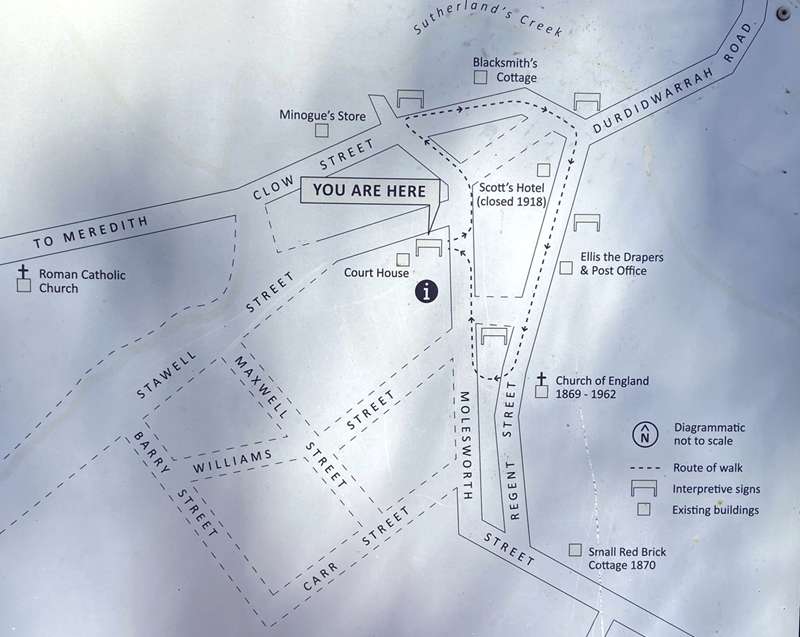
At the height of the gold rush in the 1860's, Steiglitz had a population of over 1,500, four hotels, a newspaper, a variety of shops and an undertaker. Follow this short trail from Steiglitz Historic Park along Clow and Regent Streets to historic sites and buildings detailed by interpretive signage.
Information Sign at Stawell Street and Molesworth Street Corner
Immediately behind you was the site of the Misses Jacks Private School. Note the remnants of garden and the flattened cleared space of the tennis court. The domed well in front of you is all that remains of Hood's Bakery. The brick house across the road was once Thomas Patrick Minogue's Grocery Store, now a private residence.
The Court Hotel
S. McGonigal built the Court House Hotel in 1865. At the time it was one of 6 hotels in Steiglitz. It offered first class accommodation and fine stabling. The premises was quite substantial, consisting of 12 comfortable apartments, bar, large kitchen, residence, 6 horse stables and, outbuildings. Mr McGonigal was hotelkeeper until around 1873, after which Michael Cahir became the owner for the next 20 years. After Mr Cahir's death in 1894, the hotel was left to his daughter Mary Gibney, it then became known as 'Gibney's Court House Hotel'. J.F. Gibney, Mary's husband, ran the hotel until about 1898. In 1911 its license was withdrawn, so the hotel closed.
Steiglitz Courthouse
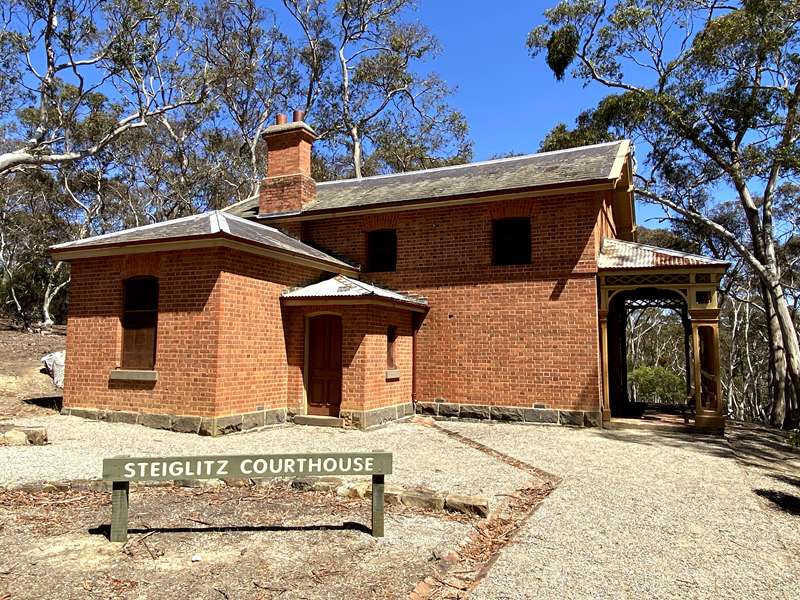
The first courthouse, a rickety timber building, was constructed at the rear of the present courthouse in 1858. The present building opened in June 1875.
By the time the new courthouse opened, the town's fortunes had waned and courthouse sittings were discontinued by January 1879. It reopened between 1895 and 1899 when Steiglitz enjoyed a revival of mining and business fortunes.
From the Courthouse verandah, you can look across the vacant lots and Sutherlands Creek to Gibraltar mine.
Information Sign along Clow Street - Work and Leisure
This site was the office of the Steiglitz Miner, first printed on 17 June 1893. The paper was sold in 1903 and incorporated in the Meredith Sentinel. Minogue's Store is to the left, and on the right, the timber cottage where Mr Sugg the Blacksmith lived. The remains of his smithy and forge, which operated until the 1940s, can be seen beside the road.
The level patch of land on the far side of Sutherlands Creek at the foot of Gibraltar Hill was the site of one of the Steiglitz tennis courts. Its charming location made it a popular venue for social games and elaborate picnics.
Minogue's Store
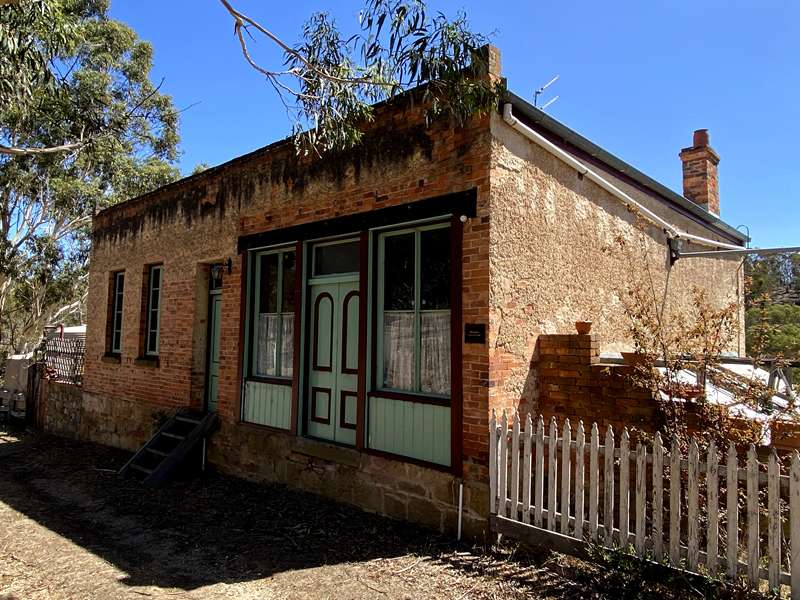
This two-storey brick building was constructed around 1865. The building has been restored to near original condition by its present Owner and is now a private residence.
Sugg's Cottage
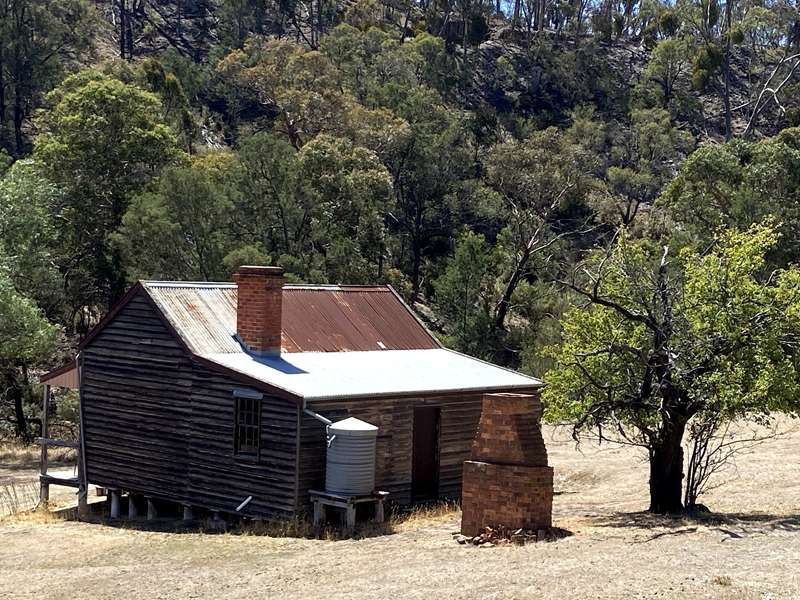
This weatherboard cottage is the only one of its kind in the area. It is a four-roomed cottage with a corrugated roof and verandah and was possibly constructed in the 1890s. It was occupied by blacksmiths, the final one being Mr Sugg in 1944. With the help of the local volunteer group, the building is currently being restored to its former appearance.
Information Sign at Clow Street and Regent Street Corner - Up Hill to Town
A favourite spot for photographers visiting 19th century Steiglitz was from Gibraltar Hill behind you. The original New Chum Bridge was built in 1859 and laid with discarded quartz from the deserted Italian Reef. Specks of gold were plainly visible, leading to the saying "Steiglitz roads were paved with gold".
Regent Street ahead of you was the heart of Steiglitz, and its fluctuating fortunes reflected those of the township. Buildings often changed hands and uses. Some businesses closed when times were bad, only to reopen when they boomed. Cobb and Co, for example, had stables on both sides of Regent Street at one time, but only operated a service to Geelong when there were enough passengers to make it worthwhile.
Information Sign at Regent Street - Regent Street West Side
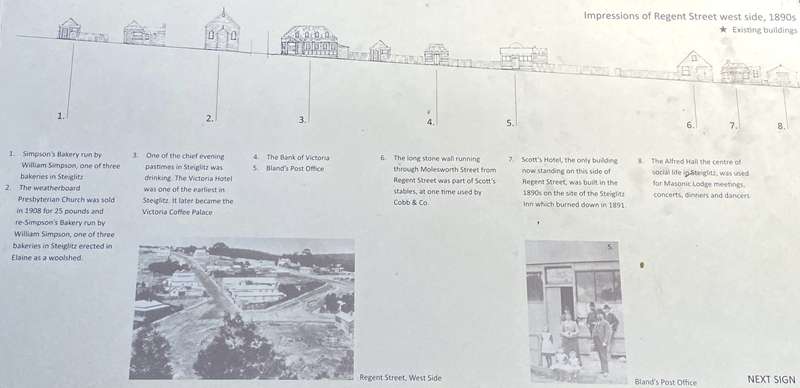
This sketch of the west side of Regent Street gives an impression of typical Steiglitz buildings - mostly simple, single storey structures of timber. But several houses were or partly built of bricks, all hand made locally. It is thought there were three local brickworks. One was on Brick Track to the east of the township nearly opposite the Boardman Reserve.
1. Simpson's Bakery run by William Simpson, one of three bakeries in Steiglitz. Known as 'Steiglitz Bakery', it was owned by the Simpson brothers who were also family grocers and general carriers. The full brick building with large half moon brick ovens was run by William Simpson until 1895. It's not known exactly why or when the bakery closed, however in 1936/37 Mr Cooke used the bricks from the building to build chimneys and a
sheep dip in the area.
2. The weatherboard Presbyterian Church was sold in 1908 for 25 pounds and re-Simpson's Bakery run by William Simpson, one of three bakeries in Steiglitz erected in Elaine as a woolshed.
3. One of the chief evening pastimes in Steiglitz was drinking. The Victoria Hotel was one of the earliest in Steiglitz. It later became the Victoria Coffee Palace.
4. The Bank of Victoria
5. Bland's Post Office
6. The long stone wall running through Molesworth Street from Regent Street was part of Scott's stables, at one time used by Cobb & Co.
7. Scott's Hotel, the only building now standing on this side of Regent Street, was built in the 1890s on the site of the Steiglitz Inn which burned down in 1891.

8. The Alfred Hall the centre of social life in Steiglitz, was used for Masonic Lodge meetings, concerts, dinners and dancers.
Scott's Hotel (closed 1918)
Scott's Hotel is a weatherboard building constructed in the 1890s on the site of an earlier hotel. It closed in 1918. The bar is still in its original form and many of the original fittings retained. It is now a private residence.
Information Sign at Regent Street - Regent Street East Side

1. The Rest, a substantial house. Built in 1893 by Christiana Scott, after retiring from managing Scott Hotel since 1861. Later moved from Steiglitz, like so many other buildings.
2. A residence was here next to a blacksmith's shop.
3. Boardman's General Store operating from the late 1850s until the turn of the century.
4. John Smith the Bootmakers.
5. Wood's the Hairdresser
6. Cobb & Co used these ten horse stables in addition to the ones across the road in the 1890s. In the early 20th century they were bought by Mr Watson and there-after known as Watson's Stables.
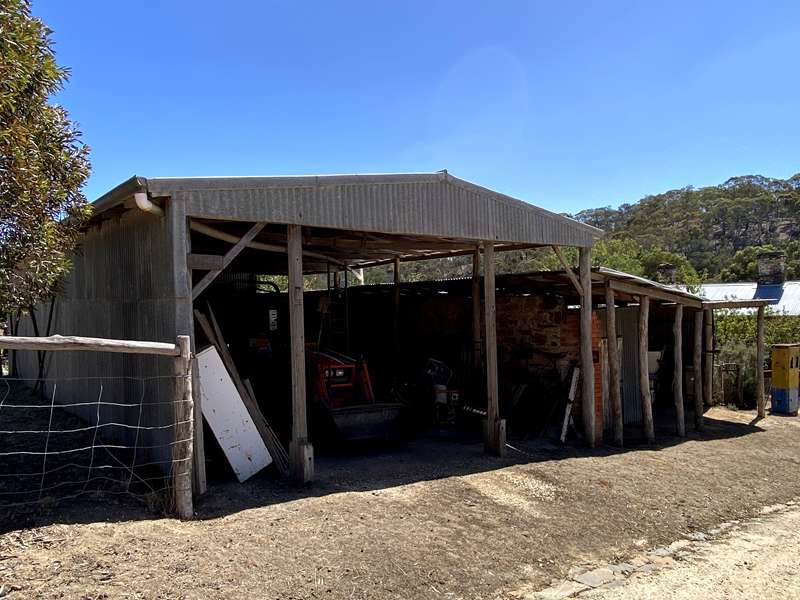
7. The Mechanics Institute, built here in 1872. It contained a Free Library with over 1,000 books.
8. House owned by Dr Scott in the 1890s. Only a single chimneys remains.
9. Ellis the Drapers; now a private house was built in the 1850s and is the oldest surviving building in Steiglitz.
10. Mr W Ingram the Ironmonger.
11. Mr Twite the Greengrocer.
12. The Steiglitz Temperance Hall.
13. Although St Paul's Church was built in 1869, it was not realised until 1944 that the site was occupied illegally. The Church of England then bought the site for two pounds.
Ellis the Drapers & Post Office
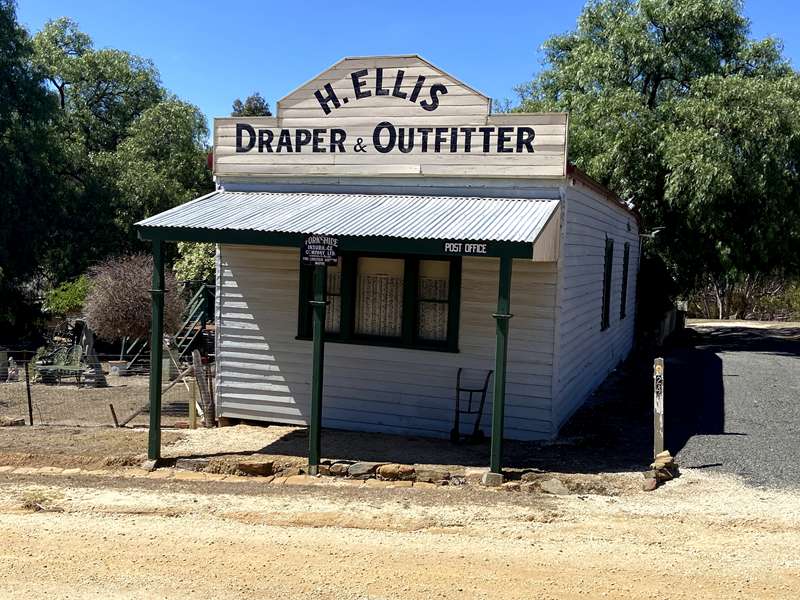
This weatherboard building was built in 1865 and used as a post office until 1966. The verandah and front wall have been remodelled. It is now a private residence.
St Paul's Church of England (1869 - 1962)
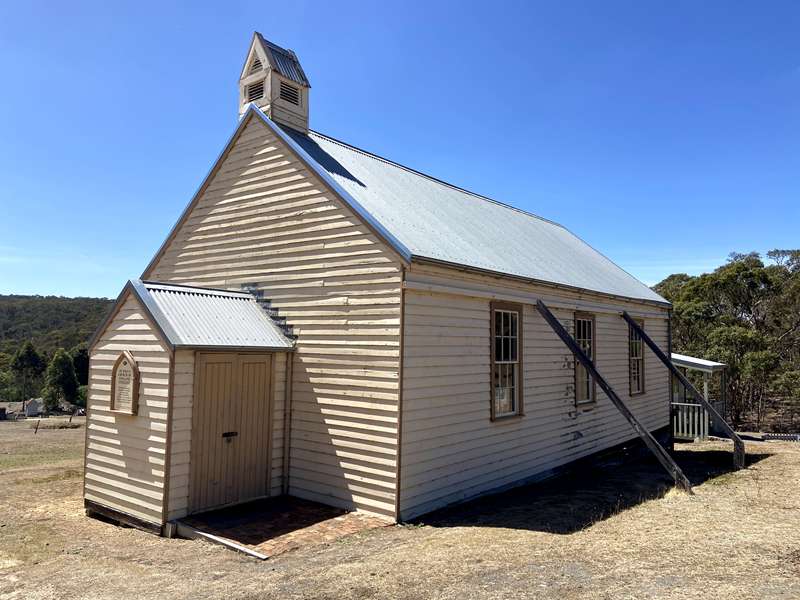
This is a timber building located along Regent Street. Established in 1872, it was used as a church until 1962. The building deteriorated until 1988 when the external structure was restored to near-original condition. The internal structure was restored in 1994 with the help of volunteers.
Small Red Brick Cottage (1870)
This small brick cottage was built around 1870 and is now a private residence. The bricks match those used to build the courthouse.
St Thomas' Roman Catholic Church
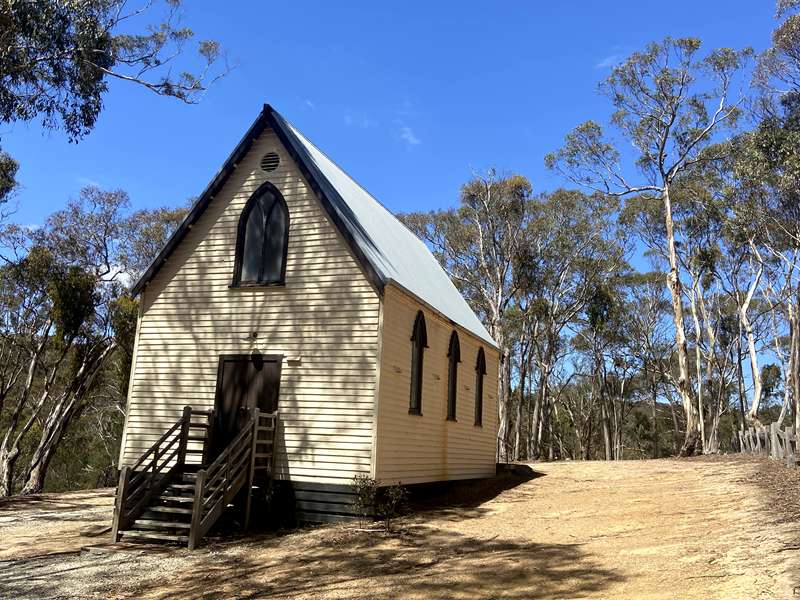
This timber building, built in 1878, is located on the outskirts of the town along the Meredith road. In 1960, the building was moved to Norlane, Geelong and in 1983, relocated back to Steiglitz close to its original site. The building is now used by a local community group who collect and conserve documents, photographs, artefacts and family histories.
Mines
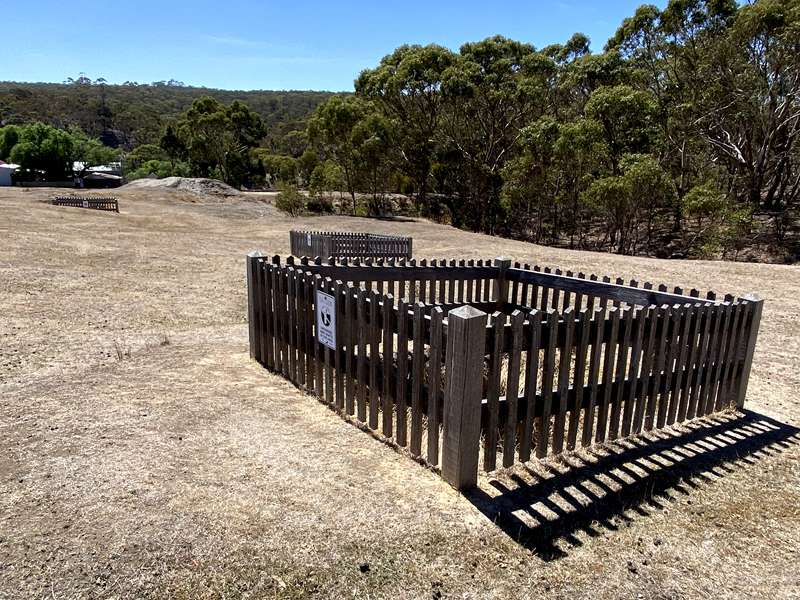
Mine tailings and mullock heaps are scattered about the park indicating mine sites. By 1897, the only two mines producing gold were the United Albion along Durdiwarrah Road and New Mariner south of Steiglitz. By 1907 only the New Mariner was still in operation.
Other relics such as brick water cisterns, stone gutters and drains are scattered within the township. Piles of rubble, sedimentary stone, bricks and chimney foundations can also be seen in the surrounding area. All relics are protected and must not be removed.
Steiglitz Cemeteries
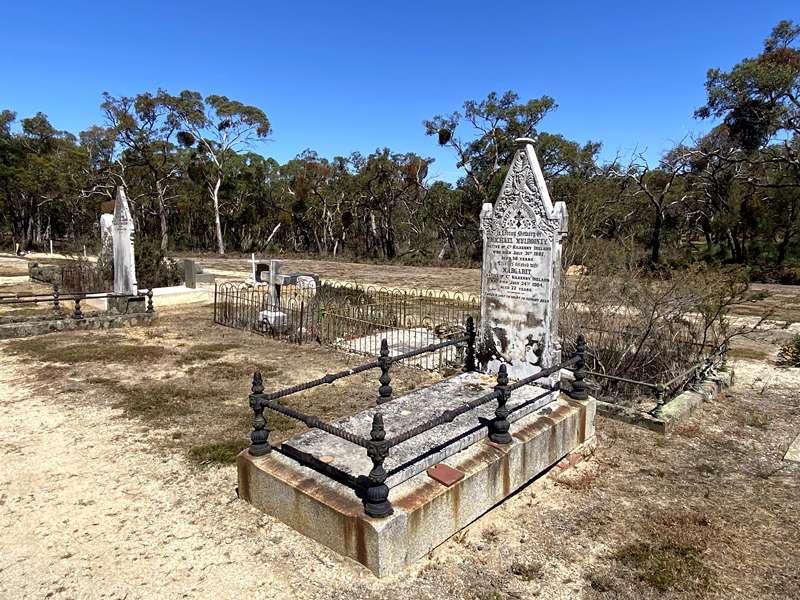
The old Steiglitz cemetery lies adjacent to St Thomas church. This cemetery closed in 1861 and only one headstone remains. The cemetery is of historical significance and the graves of miners and local residents can be identified. The new cemetery opened in 1861 and is still used. It is maintained by the Steiglitz Cemetery Trust.
Access for Dogs:
Dogs are allowed but must be on a leash.
Photos:
Location
Meredith-Steiglitz Road, Steiglitz 3331 View Map








